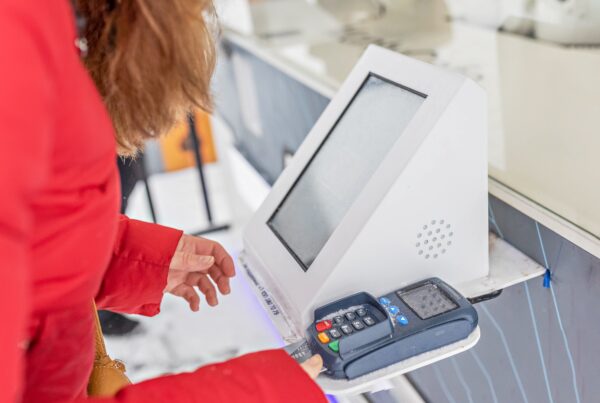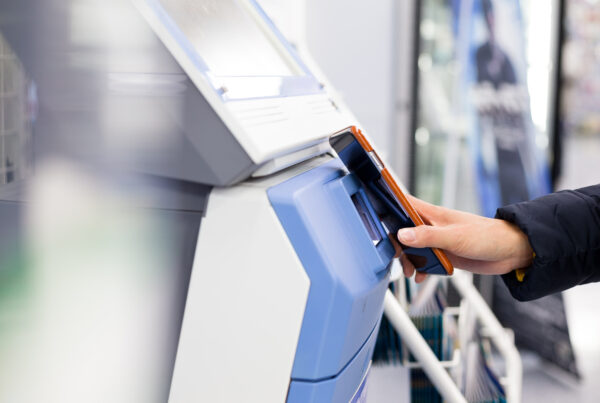Every fashion retailer needs effective inventory management to control their products, track stock flow, and plan for proper inventory replenishment. Today, with the help of digital software, clothing inventory management is automated to sync all data of sales, inventory, and customers, offering a 360-degree view of the business. A good inventory management system assists apparel owners to make data-driven decisions and lets them respond quickly to new trends in the ever-changing fashion market.
According to McKinsey, investment in technology by fashion companies is expected to double by 2030. If you run a boutique, continue reading to explore the importance of fashion inventory management, the must-have features of such typical software, and the top providers you can trust.
Why I need inventory management for the fashion retail business

The importance of fashion inventory management
1. Reduce inventory errors
Adopting thorough inventory management for retail clothing stores helps you reduce inventory errors such as stock discrepancies in the unit count, unit measures, SKU codes, etc. A good solution will automate many tasks and ensure consistent data across all your departments. It also provides you with detailed reports and analysis tools to monitor your inventory status and performance over time.
2. Reduce carrying costs
A clothing retail inventory management system keeps you updated on the stock level and the storage space it takes, helping you to minimize the carrying cost of unsold merchandise.
Clothing inventory software can digitize your business process, from order tracking, low-stock alerts, and automatic reorders when your stock reaches a certain level. In this way, you can ensure to have enough inventory to sell, but not extensive to take up your storage cost.
3. Prevent out of stock
Having too much or too little inventory is not good. The out-of-stock situation is the cause of lost sales and dissatisfied customers. You’ll want to make sure your inventory is sufficient for customer demand and never run into stockout. Here’s how apparel inventory management helps you achieve this:
- Accurate inventory tracking,
- Determine the lead time needed to reorder stock,
- Automate stock replenishment order,
- Plan for seasonal and peak demand periods.
With these methods, retailers can rest assured to have the right amount of products on hand and prevent under or overstocking. A tip is setting up alerts and notifications with an automated system to remind you when to restock your shelves.
4. Increase supply chain accuracy
Good inventory management in clothing stores tracks all items in your supply chain to ensure accuracy and punctual arrival in your warehouse or a specific store. It helps streamline the overall supply chain by limiting waste and improving efficiency. You can view your stock flow and check the delivery status of your stock orders. Even if a problem occurs, it will be easier to identify and resolve.
5. Improve demand planning
An accurate forecast of customer demand will help you prepare the right amount of goods while also decreasing operational costs. To achieve this, you must first understand your customer preferences, the market trends, and your product life cycle. An advanced clothing store inventory management platform will give you the visibility of your inventory to predict future demand so that you can adjust your production and purchasing properly to maximize your profits.
Must-have features of retail fashion inventory system

1. Real-time inventory tracking
Inventory tracking is the process of monitoring the status and movement of your stocks and products in the supply chain. It helps you find the location of a product quickly with 1 click in the inventory management system. Traceability is a prominent feature for apparel stores since you usually have tons of product SKUs with different colors and sizes. The apparel inventory software must show you exactly what you have and reflect real-time movements or allocations of your inventory, including:
- Sales volume is linked with inventory position. Therefore, when a customer purchases a product, the inventory level is updated immediately, preventing selling the same product twice.
- When materials or goods arrive in your warehouse, they’re scanned and have their information inputted into the inventory management software.
- Stock transfers between warehouses and shops are displayed in real time.
- If you have consignment stock, the clothing boutique inventory system can track it too even if it’s held in your supplier’s location.
2. Reorder points and low stock alerts
Your clothing inventory management system should be able to trigger alerts when inventory is running low. This feature can be automated emails or notifications that alert you on low stock, shipment, and delays in logistics. Thus, you can control your supply chain much better, from materials planning, shipping logistics, to vendor management.
Depending on lead time and customer demand, the inventory management system has an inventory forecasting tool that helps you decide what is the suitable time to reorder stock to reduce waste and optimize inventory storage. In addition, it allows you to generate purchase orders (PO) quickly off the back of the alert.
3. Purchase management and supplier management
Another useful feature of apparel inventory management system is offering you full control of procurement activities. The system will eliminate many repetitive manual tasks, reduce human errors, and ensure all purchasing steps follow the right process. Here’re what you can do:
- Create and autofill your purchase orders.
- Gather and store all your supplier details in a single database.
- Dynamically add discount options offered by your suppliers when you purchase in large quantities.
- Check your transaction history with each vendor.
- Evaluate supplier performance, such as reputation, product quality, price, location, and delivery speed.
4. Inventory barcoding
The barcoding feature removes data entry mistakes and digitizes business functions like collecting, storing, and organizing inventory data. By scanning the barcode before a stock enters a warehouse or leaves a store, you can speed up the process and get accurate product information. This feature is connected with other functions of an inventory management system, such as digital invoicing and reporting features. You can use mobile barcode scanning devices to improve inventory accuracy and carry out operational activities more efficiently.
5. Inventory reports
Inventory report is a must-have tool if you want to grow your boutique retail. This feature doesn’t merely collect data, it presents a solution to analyze and visualize data that serves as a valuable source of customer insights. Some clothing boutique store inventory management systems offer pre-built report templates to show essential metrics and also let you customize your reports to dig deeper into an aspect of your business.
Reporting features can help you answer important business questions and make informed decisions. Some data this feature can deliver include: inventory turnover rate, backorder rate, average time to sell for an SKU, stock age, unit sales, profit margins, etc.
Top providers for clothing inventory management software
Here’re the 4 best retail clothing inventory management software:
1. Magestore
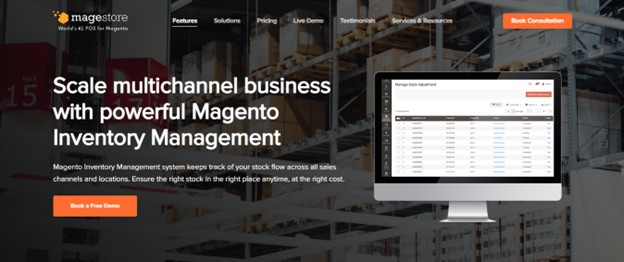
Magestore inventory management system
Magestore is a well-known POS system for clothing stores native to Magento and integrates with Shopify. It includes a powerful in-built inventory management solution for fast-growing retailers. Here’re some of the outstanding features of Magestore:
- Centralize product data in Magento backend: With only 1 central backend, you can control and apply product catalog for all sales channels, ensuring consistent information and price to customers. You can apply pricing tiers and discounts for all or selected groups of products, channels, or customers.
- Manage different types of products with a diverse set of features:
- Barcode: The barcode system lets you generate barcodes and set up product attributes with flexible options and templates. Via barcode scanning, you get all product information including SKU, prices, and stock availability, saving you time from adding items manually.
- Serial numbers: You can set up your serial number system and assign a unique number to each product. This helps you track accurate items, from the time you receive stock from suppliers, transfer stock, and check out for customers, to other after-sales services like refund or warranty.
- Sync inventory data across channels and locations: All data on inventory levels are updated in real-time for multi-channel and multi-location. The stock data and sales data are synchronized and all managed from your Magento inventory management system to avoid discrepancies.
- Stock tracking in multi-warehouse: The system can manage multiple warehouses with ease. It lets you decide which warehouse to deliver products to or which location to return items to in case of a credit memo.
- Inventory transfer: With Magestore, you can plan and manage the movement of stock from 1 warehouse to another to optimize inventory availability when you have multiple sales channels. This process includes planning, creating transfer requests, delivering and receiving items, and putting away.
- Know when and what to buy: With Magestore, you know exactly the stock quantity you have and when you need to reorder. Based on the back sales list, low-stock alerts, and historic stock reports, you can plan the right reorder procedures and generate a purchase order right from the system. This helps optimize your supply chain and stock management process.
- Other POS features: omnichannel sales, payment processing even when the Internet is down, click-and-collect, loyalty programs, employee management, etc.
2. NetSuite
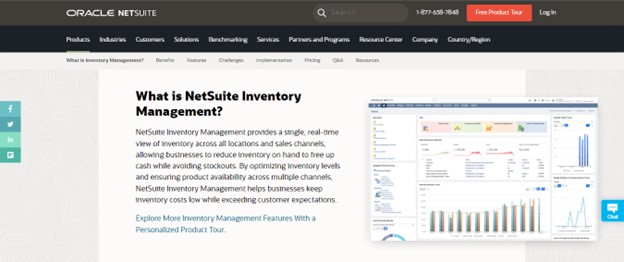
NetSuite inventory management system
NetSuite Inventory Management offers robust warehousing competency that lets you gain complete control over your stock distribution workflow. It provides a single, real-time view of your inventory across all locations and sales channels, helping fashion retailers to prevent stockout and reduce the holding cost of extensive inventory.
Here’re what you can expect in NetSuite:
- Multi-location fulfillment: You can proactively monitor stock levels and sales, and inventory movement between locations to ensure product availability across channels and minimize obsolete inventory taking your storage space, thus freeing up capital on warehouse resources.
- Replenishment: NetSuite uses demand-based replenishment that takes data of historical and seasonal sales and average lead time to dynamically decide the reorder points and maintain preferred stock levels. It can automatically generate tasks and alerts for purchasing actions.
- Cycle counting: NetSuite Smart Count is an inventory cycle counting solution that automatically counts inventory without freezing transactions. It determines the inventory level at the time you start counting for each item while keeping track of the transactions happening during the count.
- Traceability: You can track inventory using lot and serial tracking. While lot numbers track the quantity and cost of each item purchased and produced, serial numbers let you select a specific item during customer checkout.
3. Lightspeed Retail
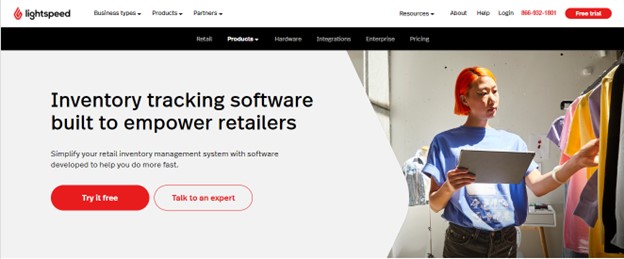
Lightspeed inventory management system
Lightspeed Retail is a famous cloud-based POS solution that is used by retailers from various industries like apparel, footwear, jewelry, pet, bikes, sporting goods, and home decor. It offers business owners many tools for inventory management, store management, payment processing, purchase order management, customer service management, financial system integration, and connection with POS hardware like barcode scanners or receipt printer tools.
Lightspeed is a fully integrated, eCommerce platform for you to manage in-store and online inventory, acquire a single view of customers, and monitor omnichannel sales performance. The POS system provides multi-store capabilities, including:
- Inventory synchronization across all locations: Make sure your items are counted correctly in all warehouses and stores.
- Mobile extensions: Your sales team can check product availability and close sales from anywhere in the store via a mobile device like an iPad.
- Track products with SKUs: Using a matrix system, you can assign serial numbers to your products with multiple attributes such as size, color, and material.
- Other customer service features: profile records, sales history logs, and customer insights.
4. Fishbowl
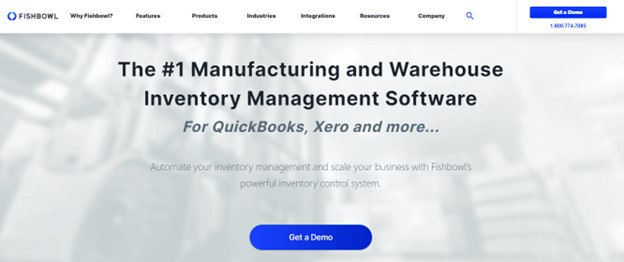
Fishbowl inventory management system
Fishbowl offers a complete business management solution suitable for growing clothing companies. The software streamlines and automates your business processes, including purchasing, production, accounting, inventory management, and sales and customer management. It seamlessly integrates with many popular business solutions like QuickBooks, Amazon, Salesforce, Adobe, Shopify, etc. to touch almost all business aspects.
Fishbowl has diverse features of inventory management for clothing that helps apparel retailers improve their management and operation activities:
- Control inventory: Barcode printing and scanning, automatic reordering, picking, packing, and shipping products.
- Multiple locations: Monitor inventory levels by warehouses, analyze sales trends at each location, and transfer products among different locations to prevent shortages.
- Order management: Trace shipments to their destination, receive stock in your warehouse, record sales and deliveries, and set up automatic reorder points for items.
- Sales and purchasing: Instantly update prices of sales orders when product information is changed, convert quotations into sales orders, save sales-order templates to reuse for future sales, apply discounts and pricing tiers to different customer groups, and monitor vendor prices and performance.
Many providers integrate simple clothing inventory management functions inside their POS systems. Here’re the 7 best clothing store POS systems you can consider.
Challenges when managing inventory in retail store

If you own or want to start a clothing store, here are the 3 toughest inventory management challenges to pay attention to for your boutique:
1. Inconsistent tracking
Inaccurate, time-consuming tracking is a problem when you use different software and spreadsheets. A centralized inventory tracking system with accounting features will solve this pain point, helping you to quickly locate an item in the warehouse, its shipping status, and track any product exchange or product return. Receiving and finding the right stock is necessary to reach an efficient warehouse process and positive customer shopping experiences. Difficulty in product tracking from supplier to customer will no longer be a concern.
2. Inefficient utilization
This is when you have excess inventory in one location while out of stock in another location. It causes unnecessary high inventory carrying costs while creating missed opportunities to fulfill orders where required. To solve this, you need to link multi-location warehouses and stores, then define a procedure on when and how to move stock around to optimize storage costs and revenue.
3. Forecast wrong demand
Since customer demand can shift constantly in the fashion industry, you should try to minimize poor planning that can lead to problems like stockouts, excess inventory, increased discounting, and write-offs. Over or understocking can cause your business to suffer when sales and inventory don’t meet each other. Keeping too much can lead to obsolete clothing store inventory that is hard to sell and wasted capital on storage while keeping too little can make you unable to complete customer orders.
Hence, you should get a clothing inventory management system to analyze historical data and apply the 80/20 inventory rule to figure out which items are bringing you the most profit to create a suitable inventory plan. In this way, you can compensate for changing demand and won’t risk too much with the wrong plan that can badly affect your business’s bottom line.
To wrap up
Robust clothing inventory management software will help you speed up your process and eliminate errors. We hope this article has given you the right knowledge of the benefits, must-have features, and how to select a suitable inventory management system for your boutique. If you want to grow fast and sustainably, Magestore is happy to help. We can customize the system based on your needs, stay with you for any technical support, and offer upgrades for your future expansion. Would you like to see what a tailor-made clothing inventory system looks like? Request a free demo today!






